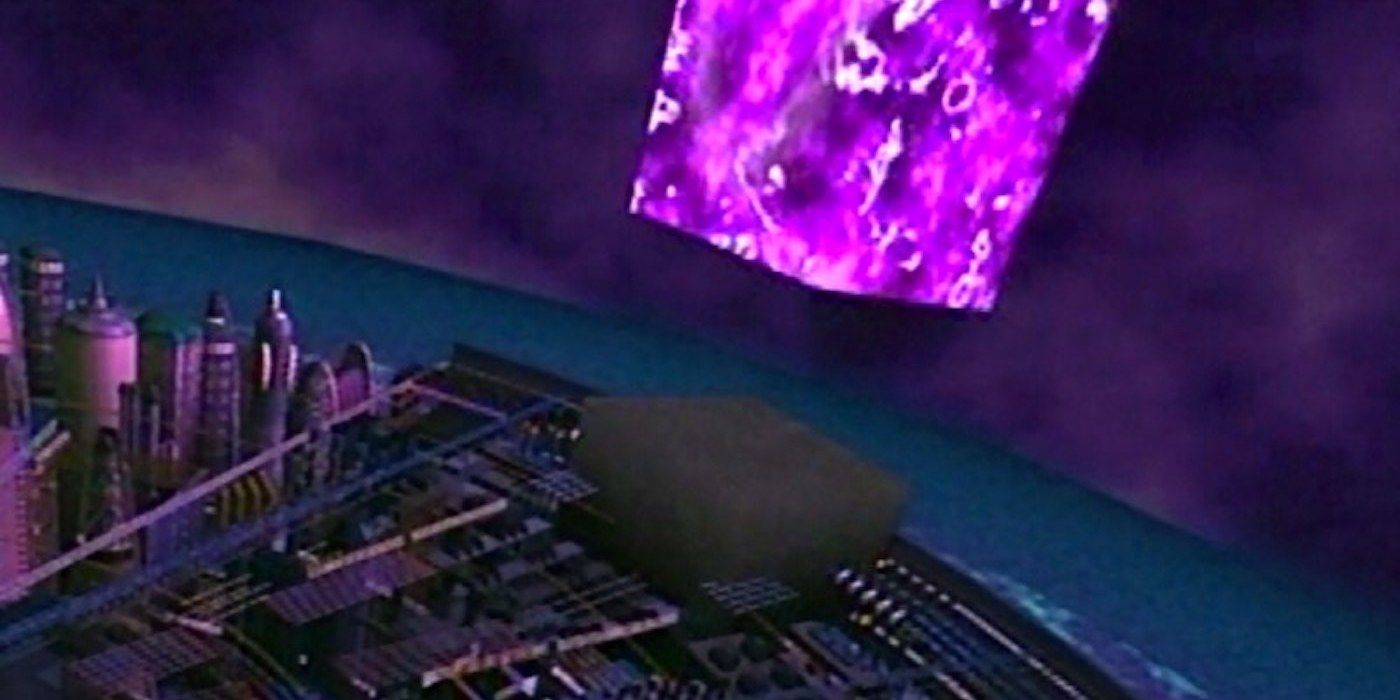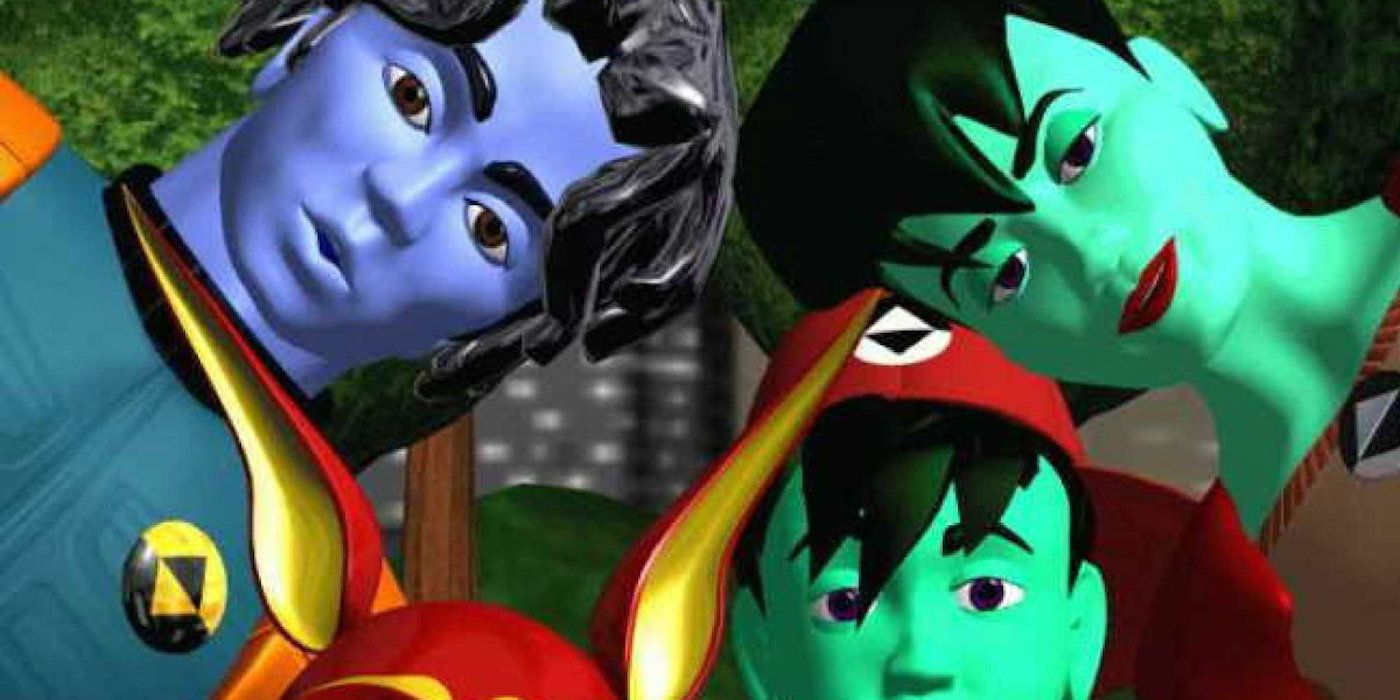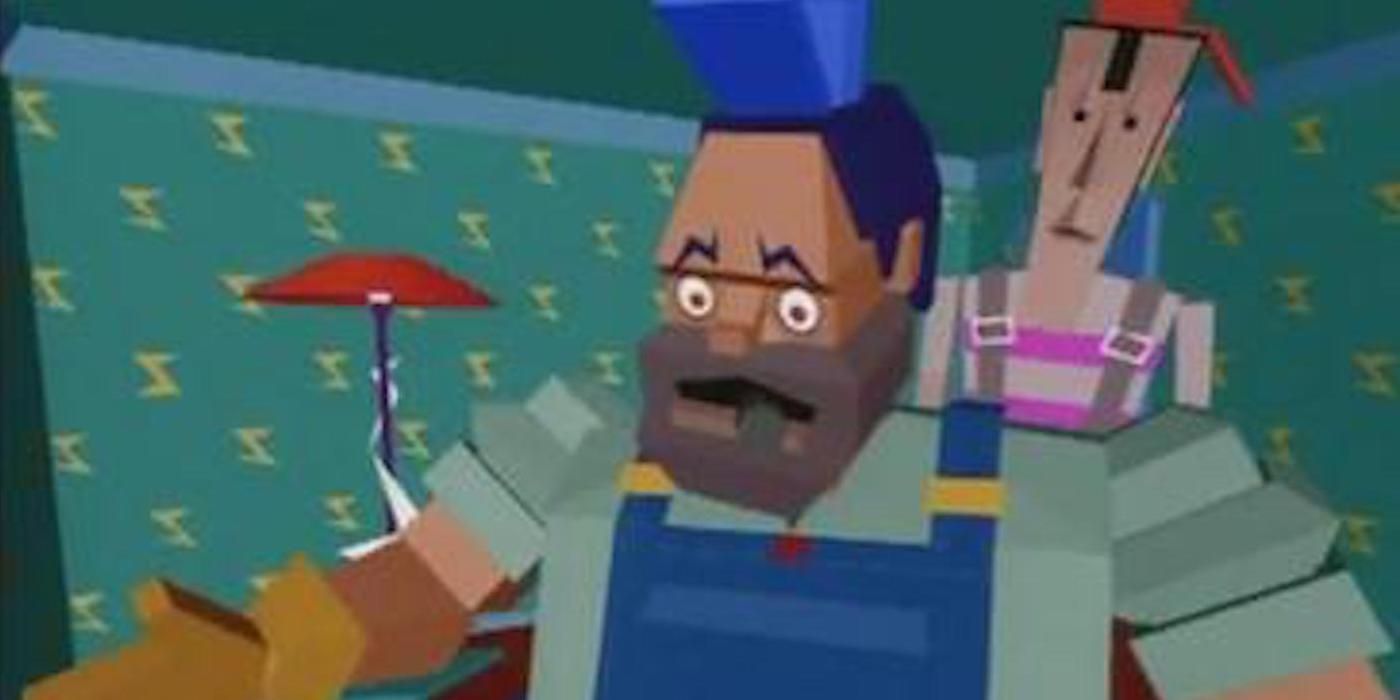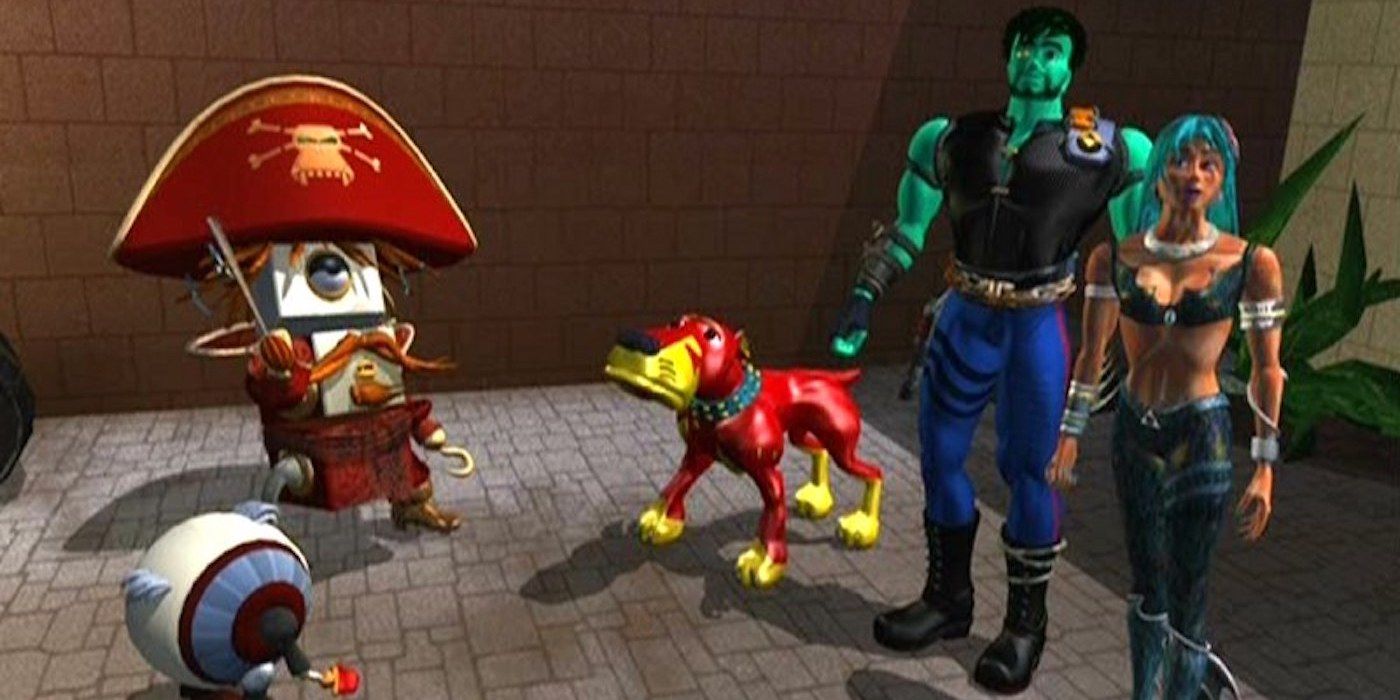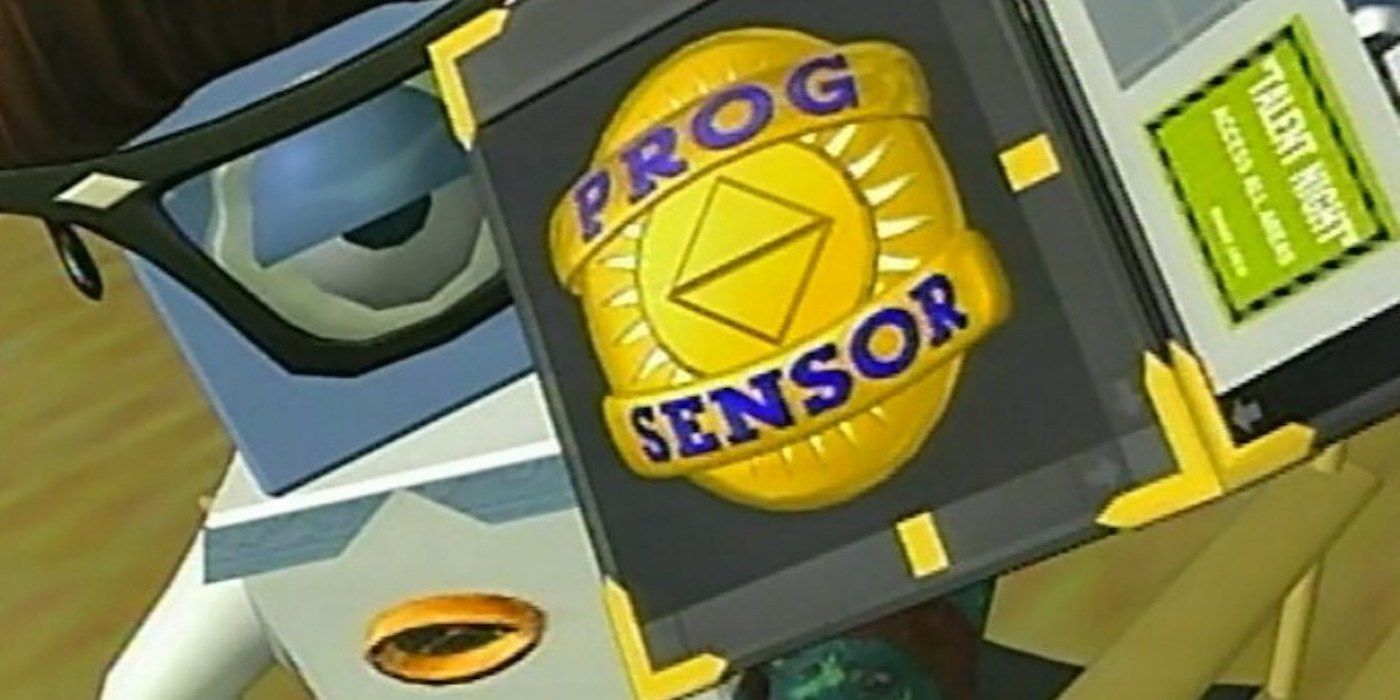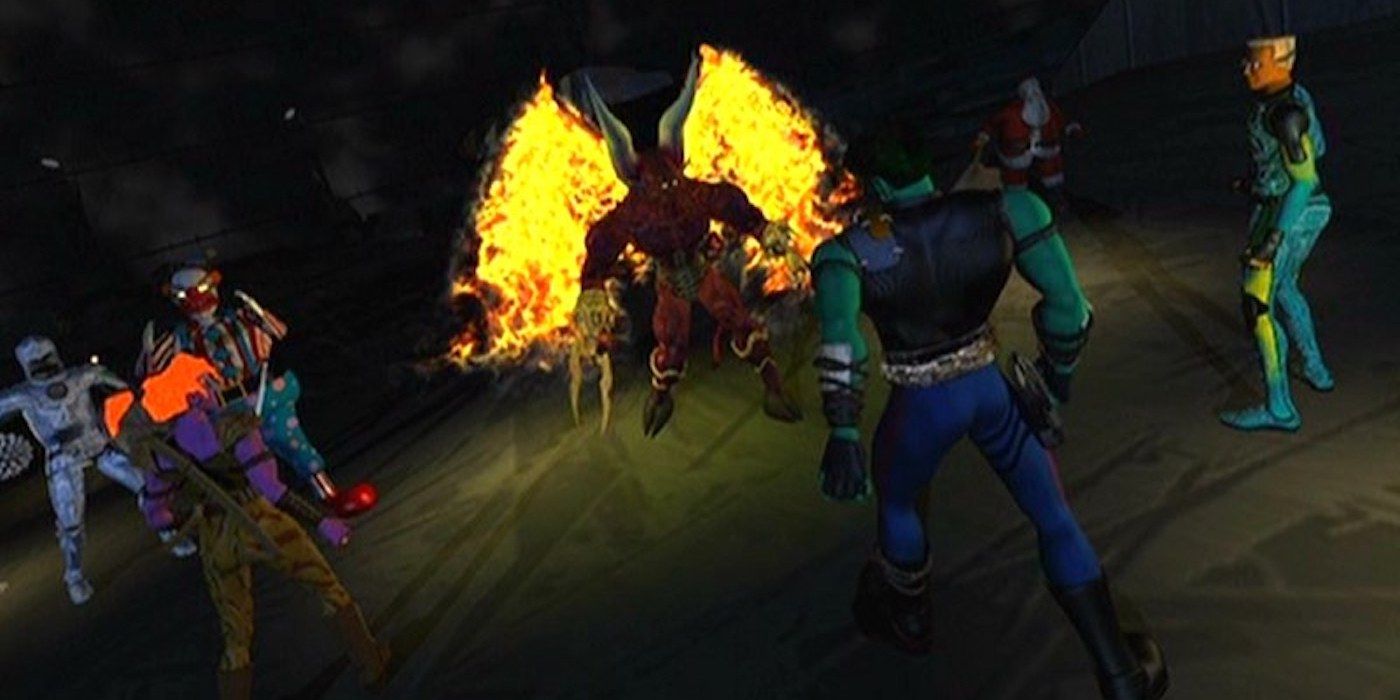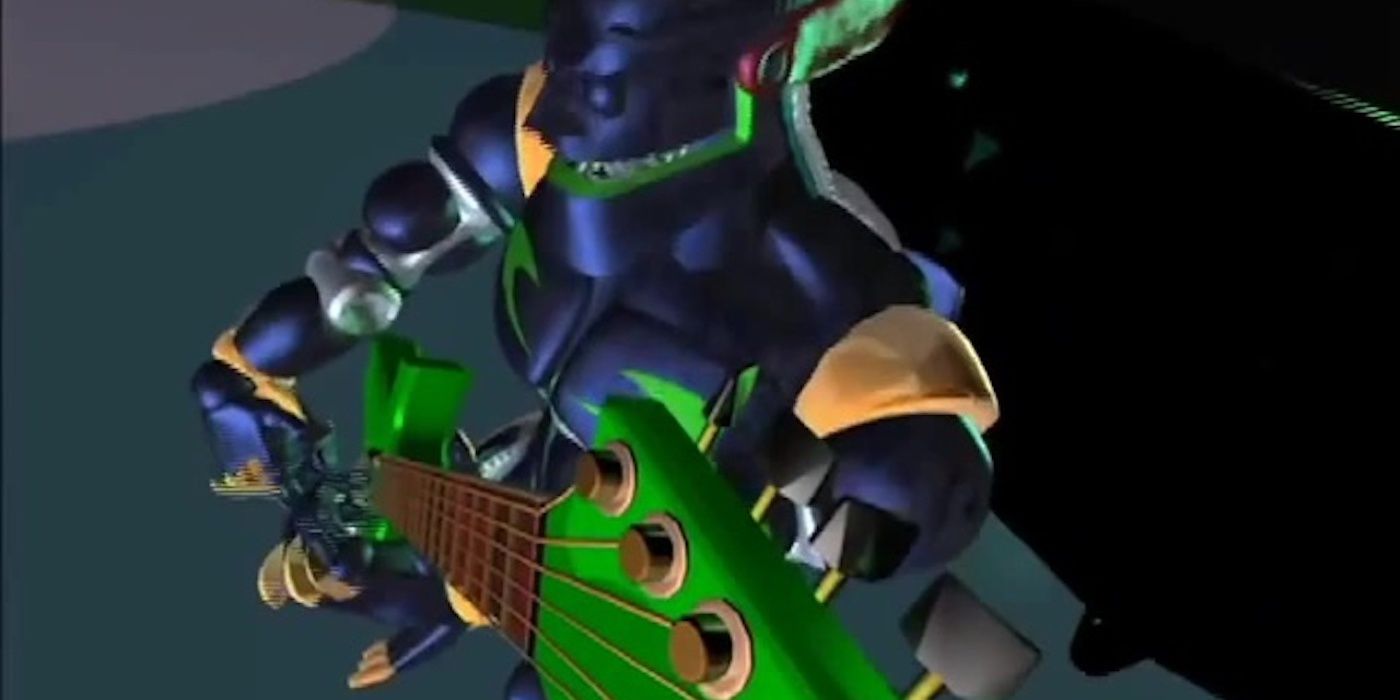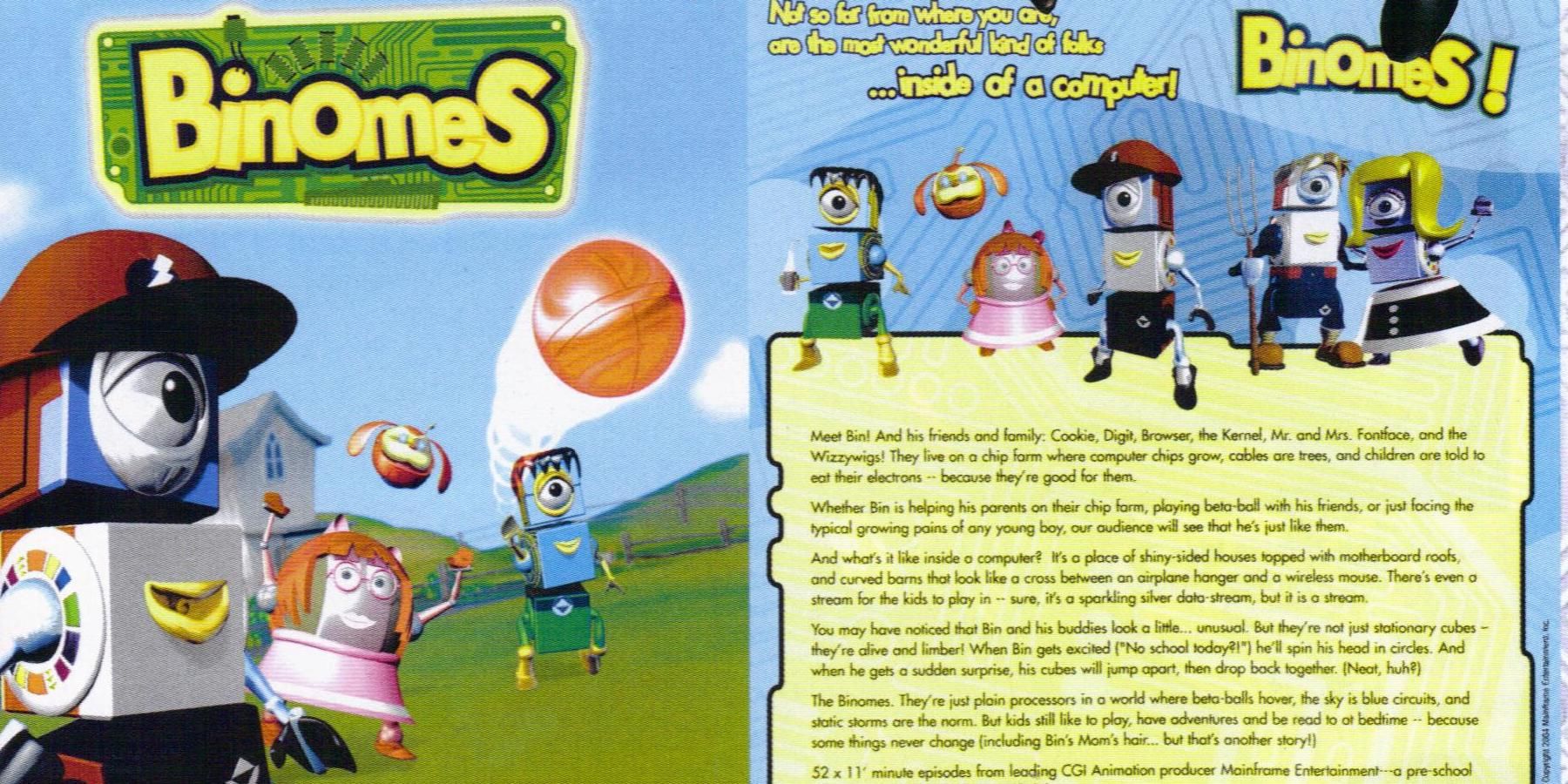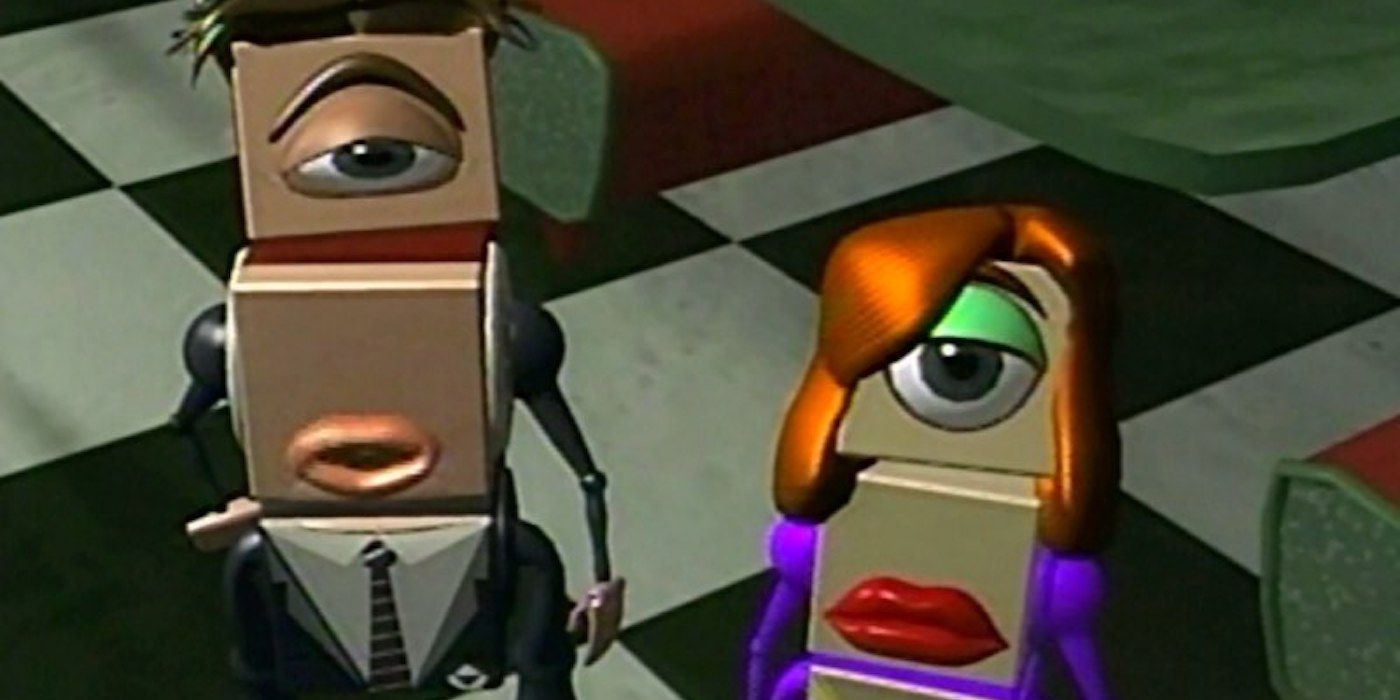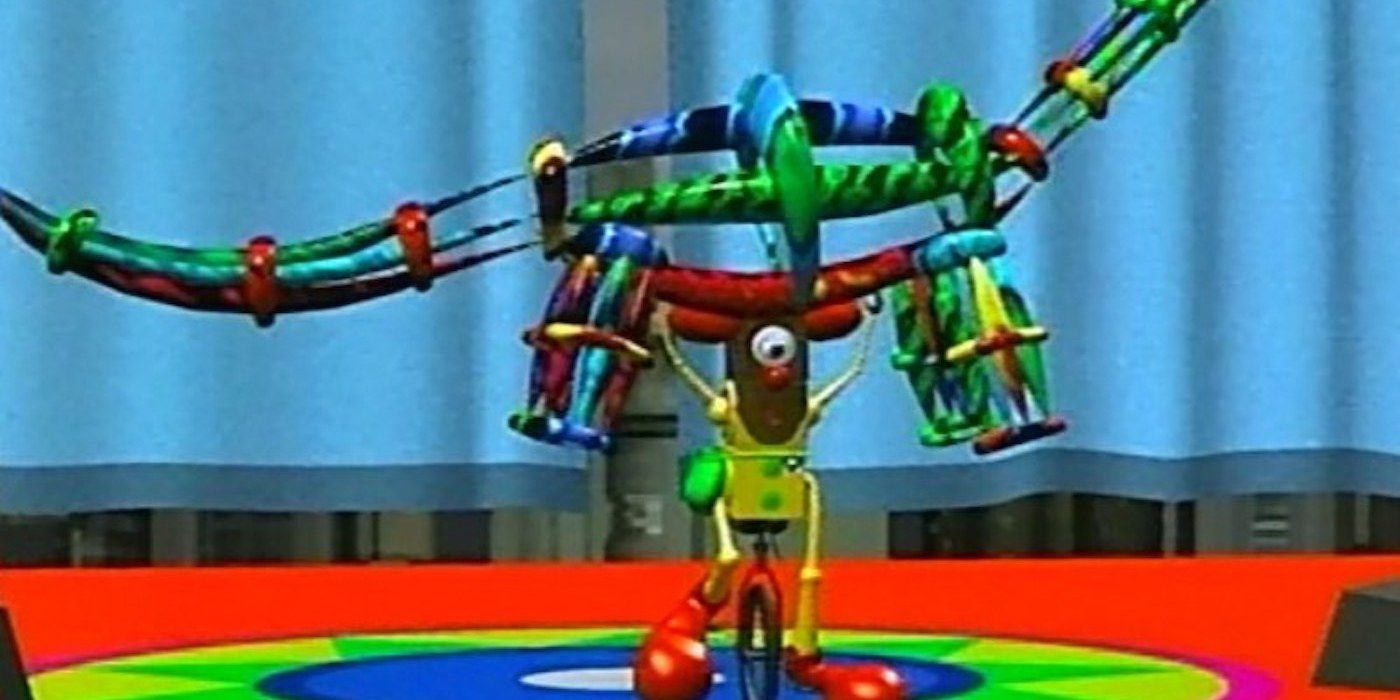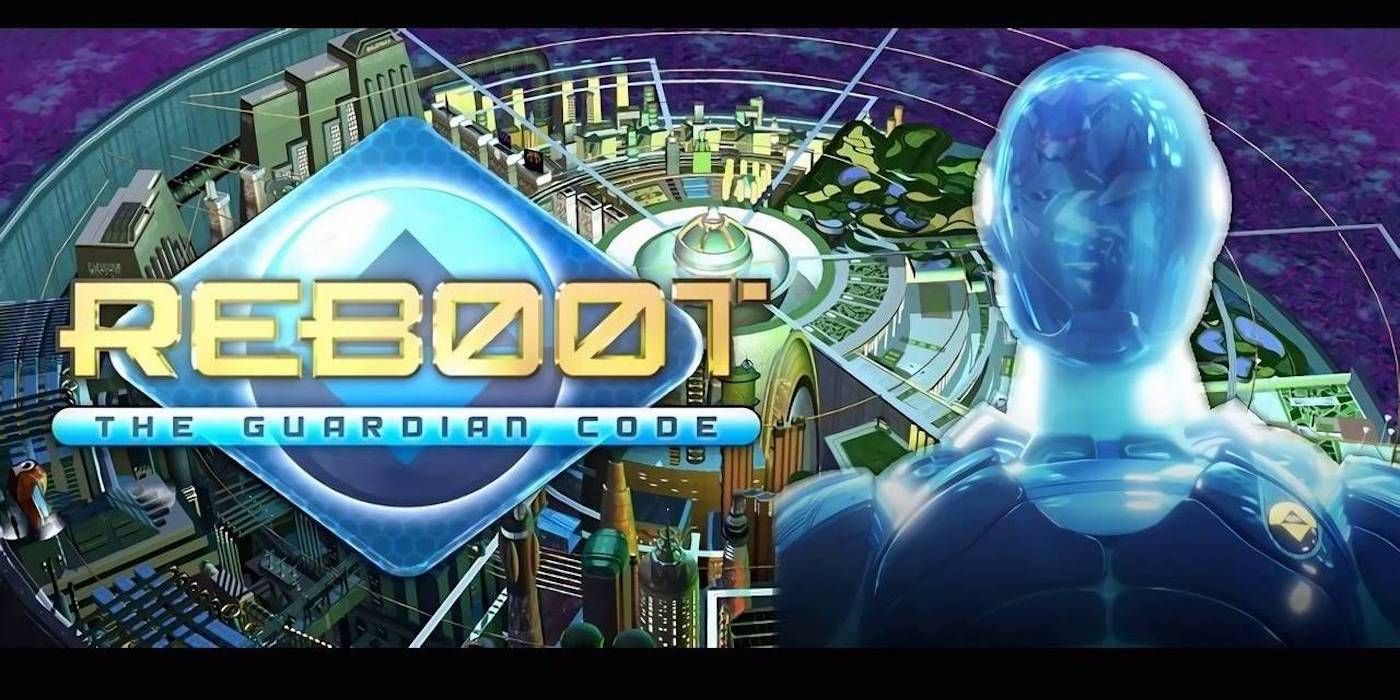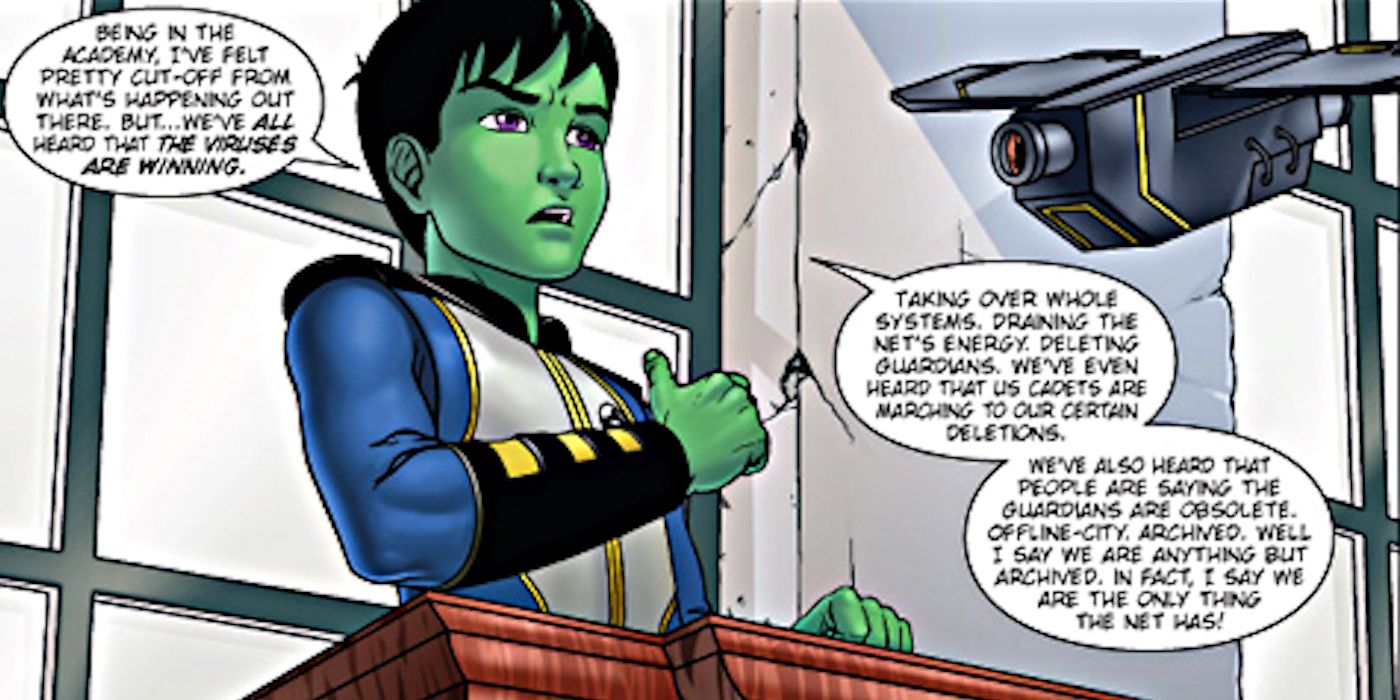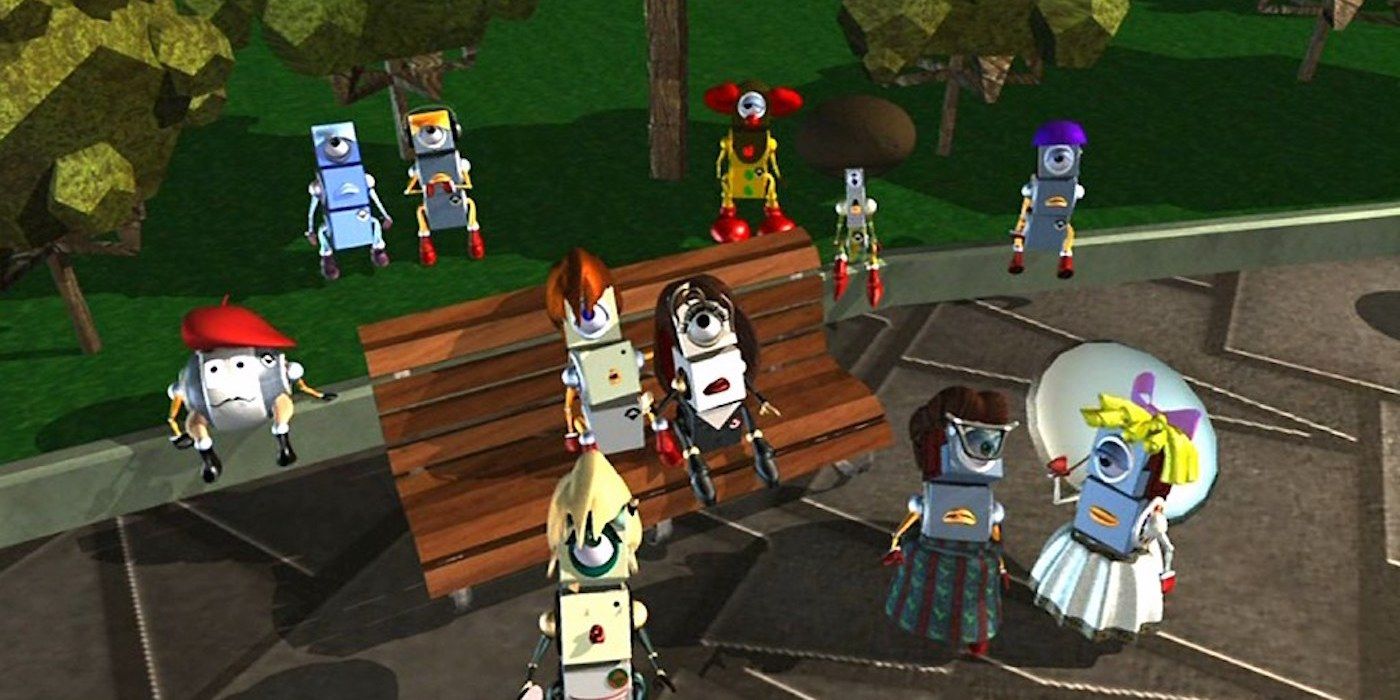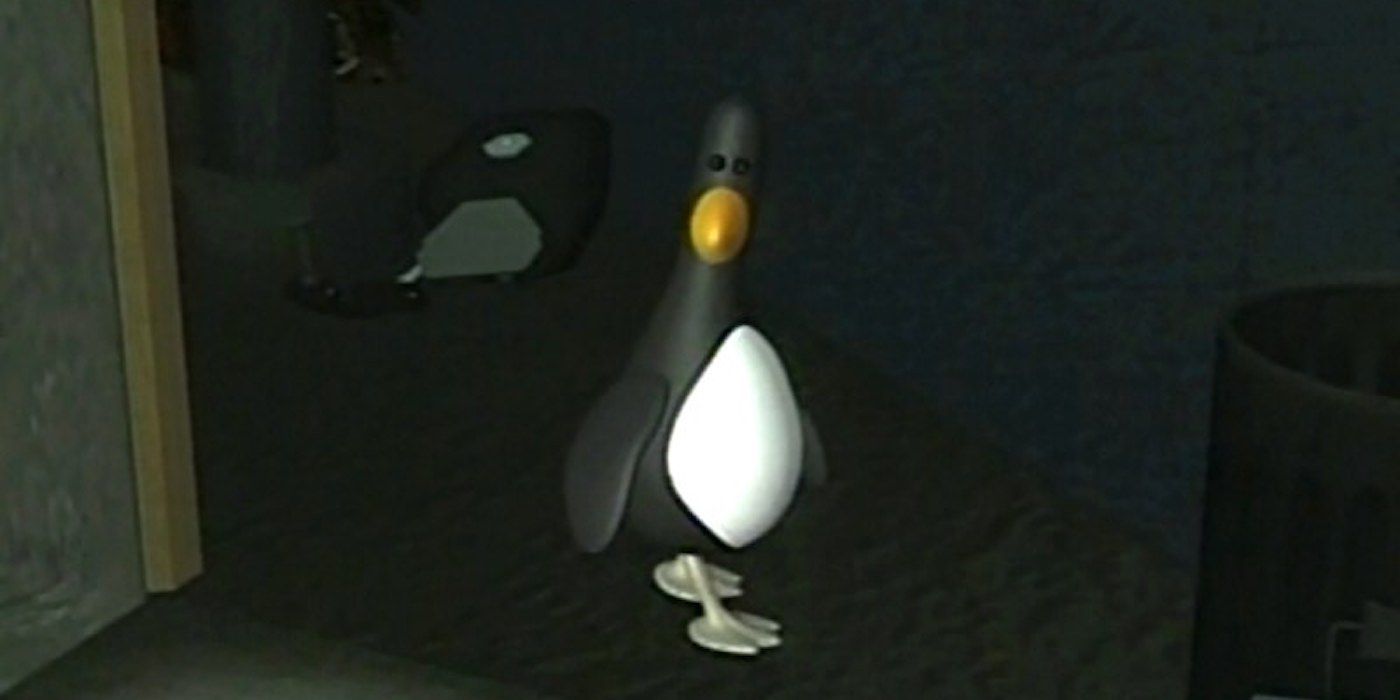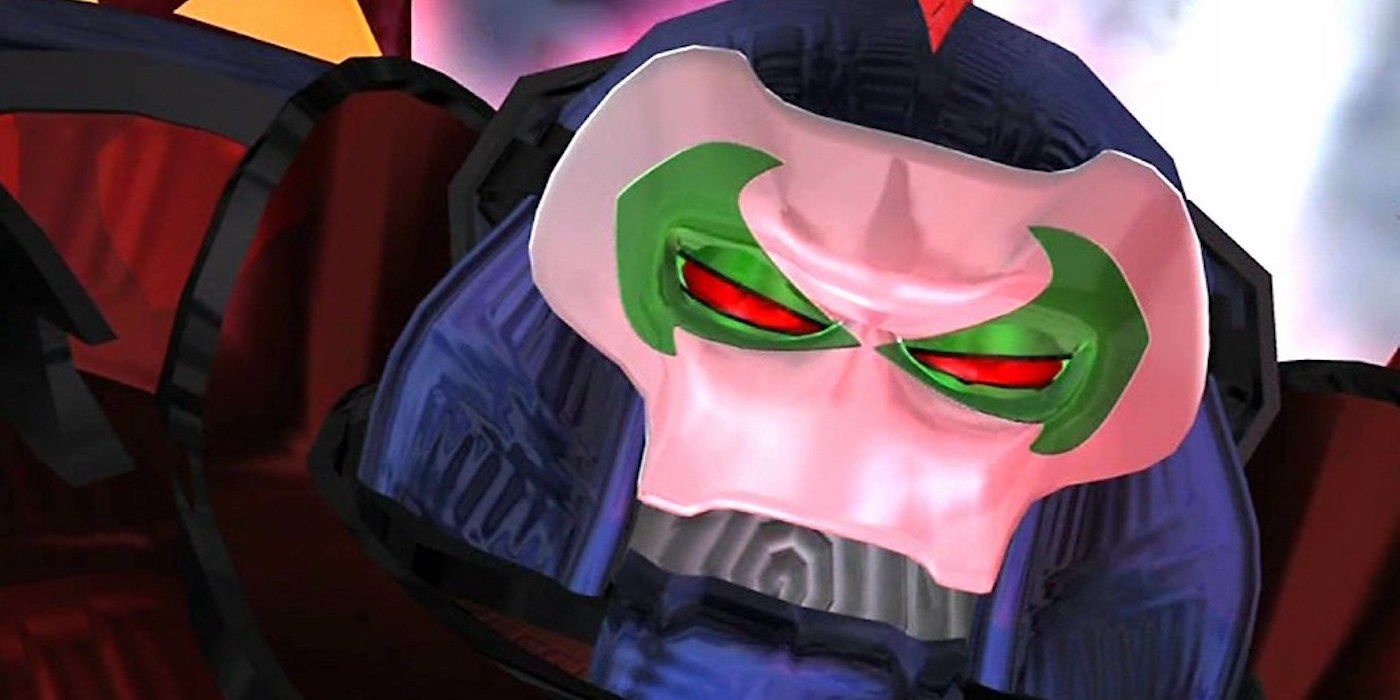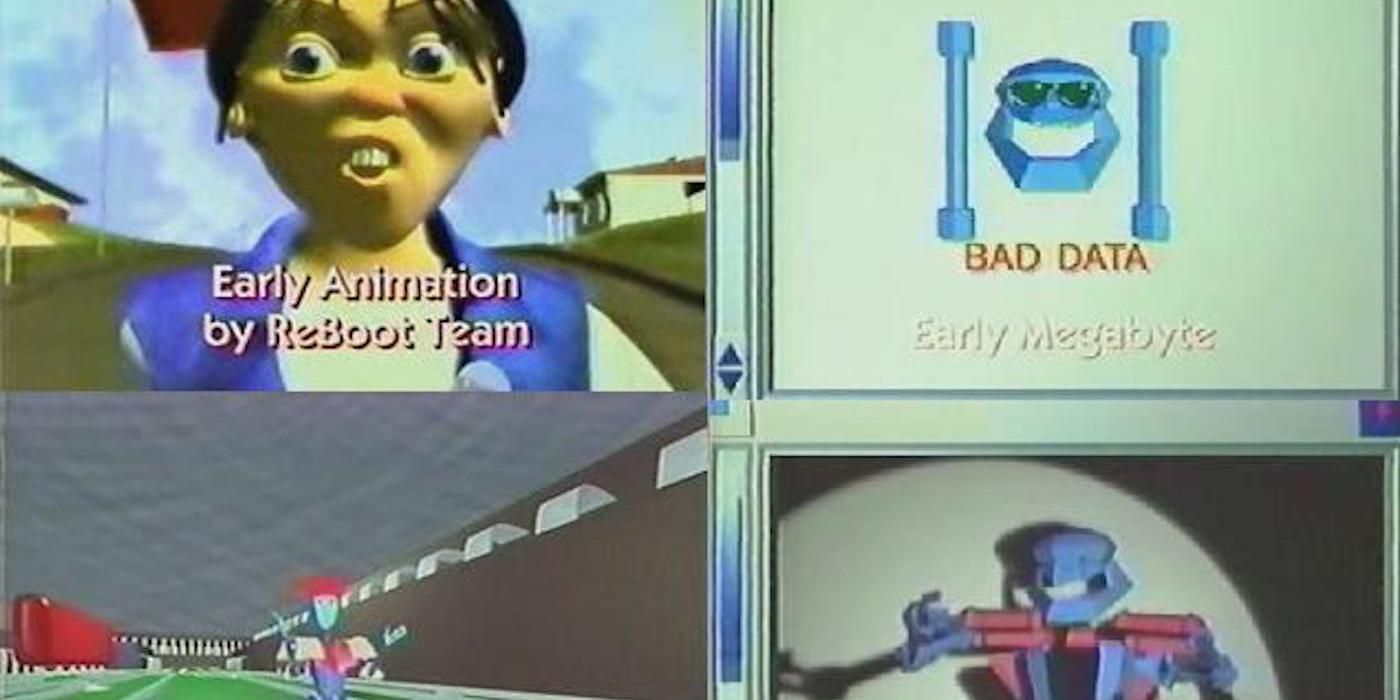Who would have thought that, in 1994, when these words were first uttered, “"I come from the Net. From systems, peoples, cities, to this place: Mainframe. My format? Guardian. To mend and defend. To defend my newfound friends, their hopes, and dreams. To defend them from their enemies,” they would still resonate so strongly over 20 years later. Reboot is a bit of an oddball of an animated series in the sense that people have either never heard of the computer animated show or are rabidly devout fans. It’s also a television show that’s experienced a startling metamorphosis over its lifetime, which has seen it repeatedly coming and going from the airwaves. Still, ReBoot remains a relic of action-adventure storytelling in children’s programming. Not only did it blaze trails in the field of animation, but it would remain challenging and involve unique takes on the computer world in fascinating ways. ReBoot is a series that feels like it would function just as well now—if not better—than when it originally aired in the ‘90s on ABC, so in honor of the series, Here Are 15 Things You Never Knew About ReBoot.
15. The ReBoot Creators Also Made the Animated Characters in Dire Straits’ “Money For Nothing” Video
Years before the talent behind ReBoot were a part of Mainframe Entertainment and mending and defending their beloved series, they were hired out to handle less glamorous computer animation gigs. While they were still cutting their teeth, Ian Pearson and Gavin Blair, the people behind ReBoot, were hired to handle the computer graphics for Dire Straits’ “Money for Nothing” music video. Even though the video would be popular and receive reasonable acclaim, Pearson and Blair would grow to dislike the video and wanted to distance themselves from it entirely due to its amateurish look.
Never missing the opportunity for some meta-commentary, in the episode “Talent Night,”ostensibly the same characters from the music video appear and perform in the ReBoot universe. They’re not any more popular over there though, as the reaction to their performance sees them getting vigorously booed at and eventually killed. Evolve or die has never been more true.
14. A Trilogy of Movies Were Planned and Canceled
ReBoot’s later seasons were not exactly smooth sailing for Rainmaker Animation (the company that Mainframe Entertainment would become). After ReBoot’s cancellation at the end of its third season, the property was largely stuck in limbo. It wasn’t until three years later that season four would debut, which would end up being a series of movies that Rainmaker had to produce independently to make happen. Even after all of that, the series wouldn’t survive beyond its fourth season.
Since the end of the series, ReBoot’s fans have been adamant about seeing a revival, and in June 2008, Rainmaker Animation announced that a trilogy of feature films were being taken on to properly continue and conclude the show’s story. In spite of this tantalizing prospect, besides a teaser trailer and lone piece of concept art that were released in 2009, nothing developed on the trilogy of films. Rainmaker’s president, Michael Hefferon, even stated as late as 2011 that the movies were still on Rainmaker’s slate. Yet when November of 2012 rolled around, the company publicly revealed that the ReBoot trilogy was no longer a project they were working on.
13. The Kid-Friendly Stories of Seasons 1 and 2 Were ABC’s Mandate
There are two very distinct halves of the show ReBoot, which are separated by young Enzo’s transformation into the adult, Snake Plissken-esque, Matrix. The first two seasons of ReBoot aired on ABC and accordingly were held hostage to the long list of guidelines and practices that were mandated by the major network. Once ReBoot was free of ABC and was producing content independently, they were allowed to make the more mature, serialized series that they always wanted.
While Mainframe Entertainment and ReBoot were still under the thumb of ABC, some of the compromises that took place courtesy of the board of standards and practices included not only removal of references to sex, cartoon violence, but also the word “wuss.” Plus, a birthday kiss on the cheek between Enzo and his sister was not allowed due to coming across as “too incestuous.” The problems with the board of standards and practices became so severe that several jokes about the BS&P were even worked into the series, including a lengthy musical number that basically just complains about the dangers of network notes.
12. Over 30 Established Computer Games Are Featured Throughout the Series
One of the greatest joys of the show ReBoot was that it wasn’t only a computer animated television show, but it was also largely a show about video games and computers. One of the main aspects of the series were the “incoming games” that would invade the world of Mainframe as the User outside was logging on to play something.
It was always fun to see just which genre of video game was going to be indulged, with the results always showing such a clear love for the games that were being referenced. ReBoot would create a number of its own original challenges for the User to embark on, but the series also wasn’t against using real life franchises and gaming archetypes as its guide, too. As a result, over 30 well-established video games get played throughout the series. Relics of the medium like dungeon crawlers, racers, Mortal Kombat, a Crash Bandicoot and Sonic combination, a Dragon Ball Z and Pokemon pairing, and Pong all see appearances or approximates. There’s even a wonderful Evil Dead/Resident Evil mash-up called “Malicious Corpses” where the gang finds themselves in a first-person shooter against a chainsaw-armed, big chinned individual who keeps saying “Groovy.”
11. The Fourth Season Was Supposed to be 13 Episodes, With a Musical Finale
ReBoot’s fourth season was plagued with a number of issues, but the series surprisingly rolled with the punches and turned out an impressive final year. The original plan was that ReBoot’s final season would consist of thirteen 30-minute episodes, however, due to setbacks in Mainframe Entertainment’s budget, this episode order of thirteen would shrink down to eight. These eight episodes were originally conceived as two films, Daemon Rising and My Two Bobs, which were then broken up when put on television (that’s not to say that the movies never aired “as is” though). If the season had seen its full order, this likely would have translated to a third film to conclude things, as the thirteenth episode was planned to be a musical extravaganza. ReBoot has shown a fascination with musical performances since its earliest seasons, so it’s nice to see that this is how the creators wanted to go out.
Mainframe saw further frustrations when the eight episodes that aired on television were naturally cut down to 21 minutes since they were a full 30. These edits were done without Mainframe’s consent, with the edits sometimes being crucial material that instead would end up on the DVD version.
10. An Educational Binome Spin-Off Was In the Works
Spinoffs and connected universes feel like a given with how today’s pop culture is programmed to work. ReBoot might not have set the word on fire, but it ambitiously still had dreams of spreading its wings a little and trying to expand the universe that it had created. One of the more charming things about ReBoot was the way in which it would take actual computer and video game concepts and knowledge and re-appropriate them into characters, games, or plot points. This idea would branch out even further in the planned series, Binomes, which was meant to be an educational series for the preschool demographic. Binomes would focus on the popular background sprites of the ReBoot universe and be set on a “chip farm.” The series would follow Bin and his friends Browser, Digit, and the Kernel as the concept of living inside of a computer was continually used to educate. Binomes would have only been a bite-sized 11-minute series, but the plans were to do 52 episodes if the series were to have gone forward. Not much information on the series is out there, but interestingly enough the Reboot Art Book features concept art for the spin-off.
9. It “Crossed Over” With The X-Files
In what’s perhaps the most bonkers of all ReBoot facts, the series actually pulled off a stealth crossover with The X-Files during its second season. When sprites begin seeing abduction in Mainframe, special CGI agents, Fax Modem and Data Nully from the ASCII Files are brought in to investigate the disappearances. Modem and Nully are not only mirror copies of Mulder and Scully, but Gillian Anderson even steps in to do the voice work for Data (Duchovny on the other hand turned down the offer, citing it as being a silly kids’ show). The episode lays it on thick with its X-Files allusions, with the episode’s title being “Trust No One” and it starting off with a classic monster-of-the-week cold open. Modem and Nully suspect that a Web Creature is responsible for the missing sprites. The Web would become a crucial component of ReBoot’s third and fourth seasons, with it being pretty awesome that an X-Files homage is what helps usher in such a huge concept. “The Web Is Out There” is even the episode’s concluding thought. It’s surprising that all of this was allowed to air on ABC no less, with X-Files being a FOX show.
8. The Series Was Originally Conceived to be More Comedic and Slapstick in Nature
The tonal shifts that ReBoot would experience over its four seasons is enough to induce whiplash, but it’s even more insane to examine what the series originally looked like and how vastly simpler of a program it was meant to be during its genesis. To begin with, the characters looked much more like actual humans rather than computerized versions of humanoids. A much more abstract, comic book art style was also in place to compliment the lighter, more comedic vibe that filled the series. In this earliest draft of the property, Bob was known as Chip, Dot was a ditsy waitress, and Megabyte sounded like a Chicago-style mobster. He also had a Frankenstein’s Monster-like sidekick known as hacker. It’s difficult to get excited about this very cringe-worthy iteration of the series. It’s considerably harder to imagine the same gripping, emotional arcs going on in this version of ReBoot. Who knows, maybe Hacker had a devastating backstory?
7. A Sequel Series Is Currently In Production
After Rainmaker’s trilogy of ReBoot films failed to materialize, the studio would surprise fans of the property everywhere by announcing on October 3, 2013 that they were developing a sequel follow-up series called ReBoot: The Guardian Code. Details on the series remained sparse and fans were somewhat concerned that this all might have been wishful thinking, even though confirmations like a logo for the series had been released. Thankfully, Rainmaker was just biting their tongue because on June 8, 2015, the Canadian media and broadcasting company, Corus Entertainment, ordered a 26-episode preliminary season of the sequel show. With filming reportedly having even begun as recently as February, it seems like the follow-up that fans have been waiting for might finally become a reality. This sort of computer animated series is much more feasible to produce now than it was back in the mid-‘90s, with the subject matter also feeling more applicable and relevant. In theory this sequel should connect even harder than the original, striking a chord with fans from before as well as a fresh audience. Whether this version of ReBoot will require a reboot itself remains to be seen!
6. A Web Comic Was Released in 2008 to “Conclude” the Series
After the cliffhanger ending that ReBoot’s fourth season went out on, fans have continually been curious as to what was next for Bob, Matrix, Dot and company. The end of their story has remained a mystery. While films or further seasons of ReBoot seemed like an impossibility in the early 2000s, a web comic began to look like the best route for the community to get more content. In May of 2008, the group “Zeroes 2 Heroes” put a two-part web comic online that attempted to resolves elements taking place after “Crouching Binome, Hidden Virus.” “Zeroes 2 Heroes” took the project extremely seriously and even enlisted the help of many other passionate ReBoot fans to provide the art for the comic. The consensus on “Zeroes 2 Heroes’” attempt at concluding the series is that it’s a valiant, respectable attempt at tying things together, however it’s far too short for the sort of resolution required with this series. That being said, it at least provides more closure than how the TV series goes out.
5. Originally All the Characters in the Show Were Binomes
With ReBoot’s pre-production and early development stages being so lengthy, the technology and capabilities of Mainframe Entertainment would end up drastically improving during the planning stages. It’s remarkable what a difference a few years can make in terms of graphical capabilities, and it’s for that reason that the cast of ReBoot would end up transforming into a group of relatable “people” instead of the Minion-like binomes that help fill out scenes. During ReBoot’s inception, Mainframe was having difficulty successfully making human-like characters, with their solution to this being to make the anatomy of the binomes the norm. The binome models were also very easy to alter and augment, allowing a huge cast of characters to be at the show’s disposal by using this sort of aesthetic. As technology improved, a few human models were within the show’s capabilities, which would end up becoming the core cast of the series. Curiously, as the seasons progress, the prominence of binomes within Mainframe becomes less and less with human-looking characters becoming the standard.
4. Feathers McGraw From Wallace and Gromit’s The Wrong Trousers Appears in Mainframe
The reasoning behind such a peculiar cameo might still remain a mystery, but it doesn’t change the fact that a certain Wallace and Gromit villain seems to be vacationing off in Mainframe. The sinister penguin that originated in the Wallace and Gromit feature, The Wrong Trousers makes a handful of cameos—five in fact—throughout ReBoot, almost acting as a de factor “Where’s Waldo?” in this computer animated landscape. While there is no official connection between Mainframe Entertainment and Aardman Animation, the studio behind Wallace and Gromit, the appearances are perhaps allowed to take place since the character isn’t officially called out by name. There’s plausible deniability, even though it’s clearly Mr. McGraw. Beautifully, this very much reads as a sign of respect from one animation giant to another. There is love here for the mischievous Feathers rather than ReBoot attempting to attack the character or critique Aardman. It’s ultimately disappointing that the crossover between these two series doesn’t go any further, but hey, maybe Frisket will end up somewhere in the next Wallace and Gromit feature.
3. The Entire Series Takes Place Over the Course of One Week
ReBoot goes to some very epic places over the course of its four seasons. Characters outright disappear for seasons only to return much later, others dramatically evolve, and a sprawling narrative takes the inhabitants of Mainframe to the utter brink of destruction. Since the action in the series can get so grand, it’s easy to forget that all of these exploits are taking place within a computer, and later, the Internet.
ReBoot establishes early on that time passes differently within the incoming games that invade Mainframe compared to Mainframe itself. Conversely, time passes differently outside of Mainframe (AKA The Real World), with everything going on inside the computer only being “active” during certain times. Video game physics are of course different than real world physics and ReBoot is smart to play around with that paradigm. Even though tremendous adventures are being gone on, outside of Mainframe these are simply games. A lifetime for some can be a mere handful of days for others.
2. Megabyte and Hexadecimal Started As One Extremely Powerful Virus
It’s utterly Biblical that ReBoot’s two major antagonists would end up originating from one super disastrous entity in the beginning. ReBoot is pretty generous in the details of these two villains during its run. They have their secrets but they’re not endlessly obscured ciphers. Megabyte and Hexadecimal share a pleasant rivalry that would be expected from siblings, a detail that the show eventually reveals about them. The events of the second season episode, “Gigabyte,” see Megabyte and Hexadecimal merging into the titular villain. Gigabyte is extremely dangerous and combines the worst (best) traits of both Megabyte and his sister. However, what isn’t made clear from the episode is that Hexadecimal and Megabyte started this way, only to later be divided into their singular forms because Gigabyte was too powerful and unstable. Series co-creator Gavin Blair would personally explain this detail during the show’s fourth season as he thought it wasn’t exactly clear from watching the series alone.
1. It Was the First Series To Be Entirely Computer Animated
ReBoot is such a quirky, idiosyncratic series that it’s kind of remarkable that this plucky show from the first-timers at Mainframe Entertainment is actually the first full-length computer animated television show. Back in the early ‘90s, the idea of doing a syndicated series that was entirely CGI seemed practically impossible. The medium is fairly commonplace now thanks to titans like Pixar, but 25 years ago there were no studios capable of taking on such a rigorous commitment. Animation studios simply weren’t thinking about computer graphics on that scale yet. Due to such a project being entirely untested, this was an all-or-nothing sort of situation. With the idea being deemed worthy of exploring, Mainframe Entertainment was created specifically for the development and creation of ReBoot. No pilot episode had to be made where a full season was later up for negotiation. The cost of the equipment and technology was so extravagant that the investment facilitated a full-season commitment. In the process, the series ended up being a milestone for animation while proving that such a series could be done.
---
But what do you Guardians have to say about the computer-animated series? Are there more Mainframe cookies that are being hidden in some junk folder somewhere? Let your 1s and 0s be heard in the comment section below!

